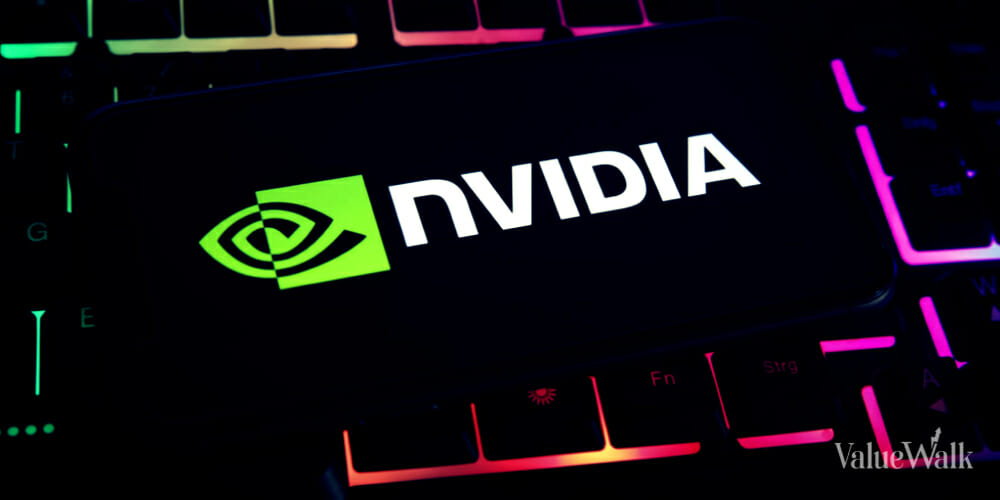NVIDIA Stock Continues Its Moon Shot: Should Investors Take Profits?

If the first few days of January gave you the impression that the “Magnificent Seven” wouldn’t be magnificent in 2024, think again. NVIDIA (NASDAQ:NVDA) stock, the most magnificent of them all, jumped 6.43% on Monday, prompting a rally in the NASDAQ 100.
Last year, buying any and all dips in mega-cap stocks like NVDA worked out spectacularly well. Investors need to avoid falling into the recency-bias trap, however. Just because a strategy worked recently doesn’t necessarily mean it will continue to work.
At the very least, investors should try to figure out why NVIDIA stock is back in rally mode. After careful consideration, the smartest strategy now may be to take some chips off the table and hold cash for the next opportunity.
NVIDIA features new AI chips for PCs
In 2022, it felt as if the market for personal computers (PCs) was practically nonexistent. After all, Millennials and Generation Z/Zoomers do everything on their smartphones nowadays, right?
Not necessarily. Intel recovered to a certain extent in 2023 by focusing its efforts on PC chips with artificial intelligence (AI) functionalities. On the coattails of the generative-AI trend, Intel showed that the market for desktop and laptop computers might not be dying after all.
Now it looks like NVIDIA is making a big push into the PC market with its own lineup of AI-enabled chips. If any company can drive a new renaissance in AI-powered PC components, it would be the industry’s darling, NVIDIA.
NVIDIA’s presentation at the annual Consumer Electronics Show (CES) trade show gave it an opportunity to unveil several new AI chips for PCs. The company’s GeForce RTX 40 Super series graphics processors include the high-end RTX 4080 Super, which starts at $999, RTX 4070 Ti Super, starting at $799 and the RTX 4070 Super, starting at $599.
Reportedly, the RTX 4080 Super is 1.4x faster than NVIDIA’s RTX 3080 Ti graphics processor, while the RTX 4070 Ti Super is 1.6x faster than NVIDIA’s RTX 3070 Ti processor. NVIDIA’s new GeForce RTX 40 Super-series processors are expected to go on sale on Jan. 31.
NVIDIA’s newly unveiled AI-enabled PC chips are primarily aimed at video-game enthusiasts. NVIDIA Vice President Justin Walker declared that these products will provide an “order of magnitude” of improvement over machines powered by Intel’s chips, so clearly, NVIDIA is unafraid to compete directly with Intel in the PC-component market.
Matt Wuebbling, vice president of global GeForce marketing at NVIDIA, confidently assured investors that the company’s latest GeForce RTX Super-series graphics cards “will have users prepared for the wave of generative AI apps coming to PC.” However, it remains to be seen whether the performance can live up to the hype.
NVIDIA’s chips for China
Furthermore, NVIDIA disclosed its plans to start mass production of an AI chip for the Chinese market in the second quarter. It will be called the H20 chip, and this product is specifically designed to comply with the U.S. government’s export restrictions on AI chips to China.
This development, as much as NVIDIA’s new AI-enabled PC chips, likely contributed to the recent rally in NVDA stock. After all, China contributes roughly 20% of NVIDIA’s revenue. Hence, if the company can commercialize a restriction-compliant product in China, it will be a major coup for NVIDIA.
The H20 isn’t the only restriction-compliant chip that NVIDIA plans to commercialize in China. The company is also developing two other chips, the L20 and the L2, for that purpose.
NVIDIA will have to walk a fine line here. If these AI-capable chips are too powerful, they won’t comply with the U.S.-imposed export restrictions. On the other hand, if they’re not powerful enough, it’s hard to imagine that Chinese customers would want to buy them.
How much higher can NVDA stock go?
Without a doubt, the market has begun to price in its enthusiasm about NVIDIA’s upcoming products. This raises valuation concerns. Alarmingly, NVIDIA’s GAAP-measured trailing 12-month price-to-earnings (P/E) ratio is now 68.83x, versus the sector median P/E ratio of 27.66x.
The financial media generally believes that NVDA stock will continue to climb higher even after recently hitting all-time highs. That’s almost certainly true, but value-focused investors should wonder whether the risk-to-reward balance is favorable at this point.
Ultimately, short-term traders might try to squeeze more gains out of NVIDIA stock over the next few weeks as the market anticipates the company’s upcoming products. However, for long-term investors, it’s not a terrible idea to take profits as it will be challenging for the seemingly almighty NVIDIA to live up to the hype it’s created in 2024.
Disclaimer: All investments involve risk. In no way should this article be taken as investment advice or constitute responsibility for investment gains or losses. The information in this report should not be relied upon for investment decisions. All investors must conduct their own due diligence and consult their own investment advisors in making trading decisions.

Comments are closed.